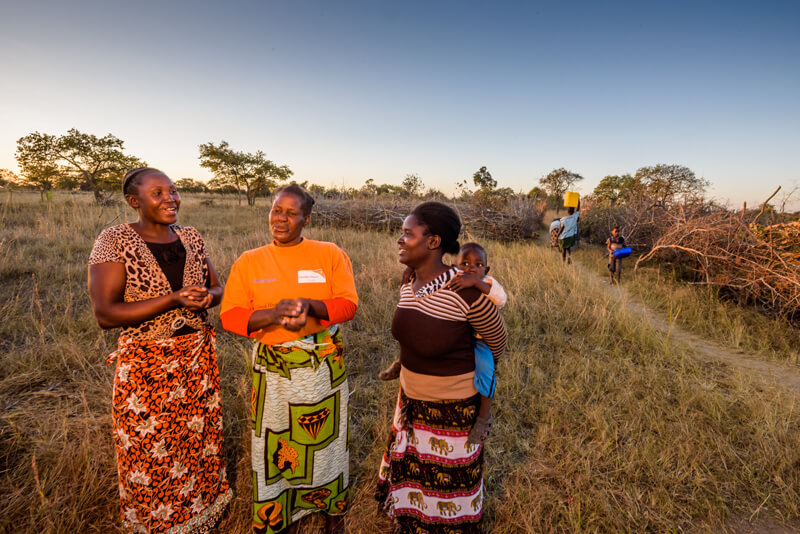Living WaterSample

Everness Hamatawi, 50, volunteer hygiene and sanitation coordinator (wearing orange World Vision shirt), talks with other women next to a pump, Zambia. ©2014 World Vision, photo by Jon Warren
Water leads to a new identity
Jesus and the woman at the well – John 4
Typical man, she might have thought when Jesus asked her for some water. In the ancient world, fetching water was seen as women’s work—much like it still is in many parts of the world today.
Everything about her would have sent most respectable Jewish rabbis running the other way. Her gender. Her reputation. Her ethnicity—a hated Samaritan.
In the ancient Jewish world, “living water” referred specifically to a source of fresh, flowing water—such as a stream or river—which offered cool refreshment. Such waters were contrasted with “dead” or stagnant waters. “Living water” became a powerful image of the life God offered.
None of this deterred Jesus from reaching out to her. One minute he was asking for a drink; the next, he was offering to give her “living water.” Imagine her shock. Since when do men offer to fetch the water, living or otherwise?
In the exchange that followed, Jesus utterly transformed the woman’s identity. He treated her like an equal, engaging in a lengthy conversation—the longest recorded dialogue anyone has with Jesus in the Gospels. He restored the woman’s dignity.
And living water flowed from her and back to her and her community.
Everness, a 50-year-old woman from Haalumba, says. “People need to understand the spiritual side of things.”
In some ways, Everness can relate to the Samaritan woman in John 4. Like her, Everness once lived on the margins of her community. When World Vision came with its unique blend of spiritual and physical development, Everness gained a new identity. “This changed my spiritual life,” she says.
Everness became a volunteer hygiene promoter. She visited one home after another, teaching good hygiene and helping families improve sanitation by using toilets and hand-washing stations, for example. “I started loving people and talking to them,” Everness says as she reflects on the last four years. “People love me now. Before, not so much.”
Today, thanks to the partnership between World Vision and the people of Haalumba, the community has a 17-foot borehole where locals can fetch clean water from the earth. The well is surrounded by a protective cement wall in the shape of a cross.
The design is no accident. It’s a reminder that when clean water came to Haaluma, so did living water. The people of Haaluma were never the same.
Scripture
About this Plan

In the ancient Jewish world, “living water” referred specifically to a source of fresh, flowing water—such as a stream or river—which offered cool refreshment. Such waters were contrasted with “dead” or stagnant waters. “Living water” became a powerful image of the life God offers.
More
Related plans

Lift Others Up: 3 Days of Encouragement

Knowing God: Pray Through His Attributes

Adventure in Evangelism

Reading With the People of God #15 Purpose

What Is the Fear of the Lord?

Name Above All

Becoming a Hero With Lisa Bevere

Celebrate

5 Minutes That Change Everything: Meeting God in the Moments

